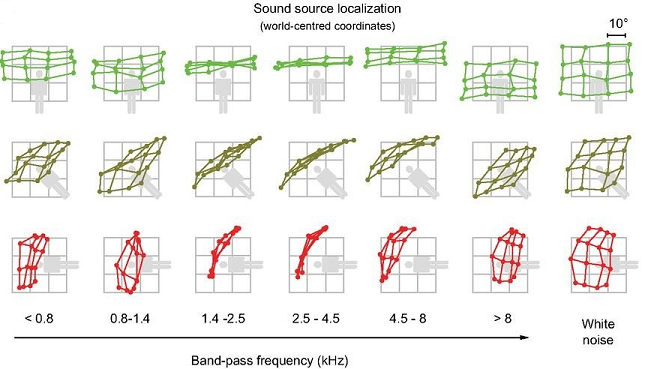
Dr Cesare Parise DPhil
Senior Lecturer Psychology
- Work email Cesare.Parise@liverpool.ac.uk
- About
- Research
- Publications
- Teaching
- Professional Activities
Research
Research Overview
My area of expertise is multisensory integration and sensory information processing (vision, audition and touch), which I investigate by combining psychophysics, computational modelling and neurophysiological techniques. My work blends blue-sky research with applied perception science, with a special focus on clinical applications (e.g., sensory substitution) and novel interactive technologies (e.g., virtual and augmented reality).
Multisensory integration
All animals, even the simplest ones, have multiple sensory systems to experience their bodies and surroundings. My research aims at understanding the computational principles of multisensory integration (with a particular focus on vision and audition) and exploiting such an understanding for a variety of real-life clinical (e.g., sensory substitution) and technological applications (e.g., augmented reality, artificial perception, etc.).
Relevant publications:
Pesnot et al. (2022) Nature Communications
Parise & Ernst (2017) Plos Computational Biology
Parise & Ernst (2016) Nature Communications
Parise, Spence & Ernst (2012) Current Biology
Patents:
Parise, Brimijoin & Robinson (2021) US Patent N. 2021/0327453 A1
Parise, Rahman, Gatti & Samad (2020) US Patent N. 10,754,428 B1
Spatial hearing

Unlike vision and touch, which rely on spatially-tuned receptors, the cochlea relies on frequency-tuned receptors. Yet, we can easily localize sounds in our surroundings. My research aims at understanding the computational principles of human spatial hearing and the role of perceptual learning in sound localization.
Relevant publications:
Senna, Parise & Ernst (2017) Proceedings of the Royal Society B
Senna, Parise & Ernst (2015) Scientific Reports
Parise, Knorre & Ernst (2014) PNAS
Patents:
Parise, Donley & Robinson (2022) US Patent N. 11,234,090 B2
Touch and motor control
Our hands are the primary effectors for interacting with our surroundings. However, rich tactile cues are often missing in novel interactive technologies, such as touch controllers for virtual and augmented reality. My research aims at understanding how tactile input is processed during manual interactions, and how to exploit multisensory input best to compensate for the impoverished tactile cues offered by consumer-level haptic interfaces for virtual and augmented reality
Relevant publications:
Ryan et al. (2021) Journal of Neurophysiology
Moscatelli et al. (2019) Science Advances
Samad, Gatti, Hermes, Benko & Parise (2019) ACM-CHI
Patents:
Mukherjee et al. (2022) US Patent N. 11,385,716 B1
Parise et al. (2021) US Patent N. 2021/0191689 A1